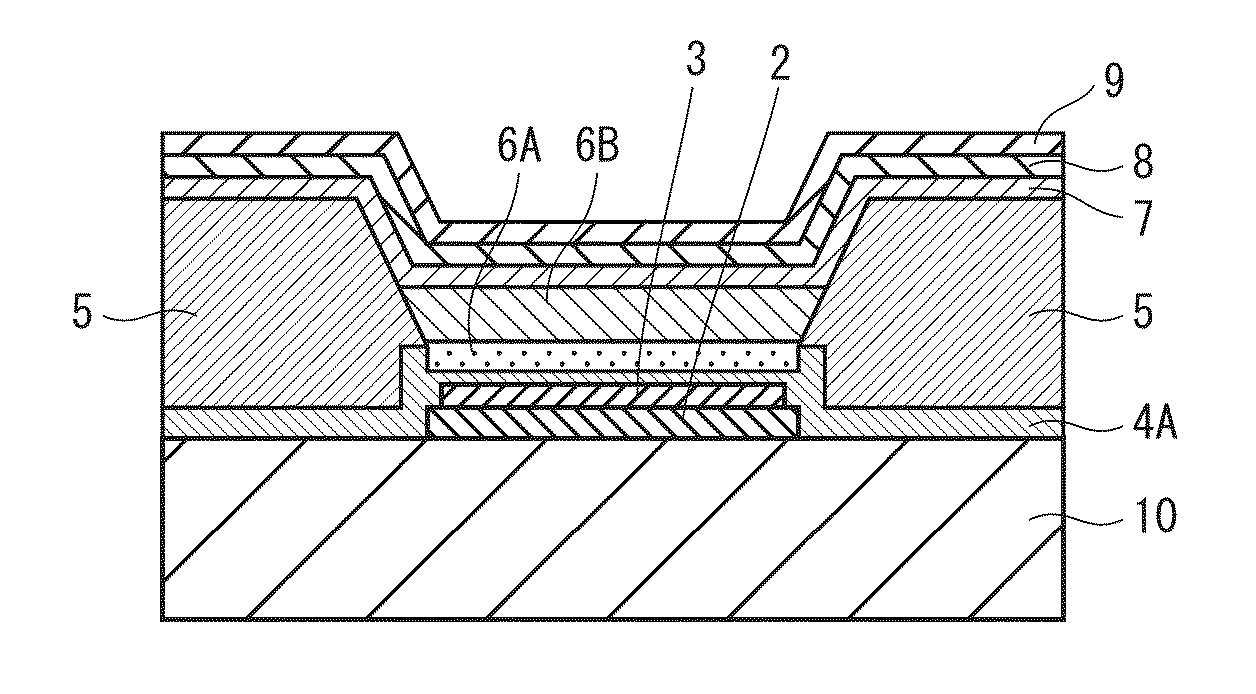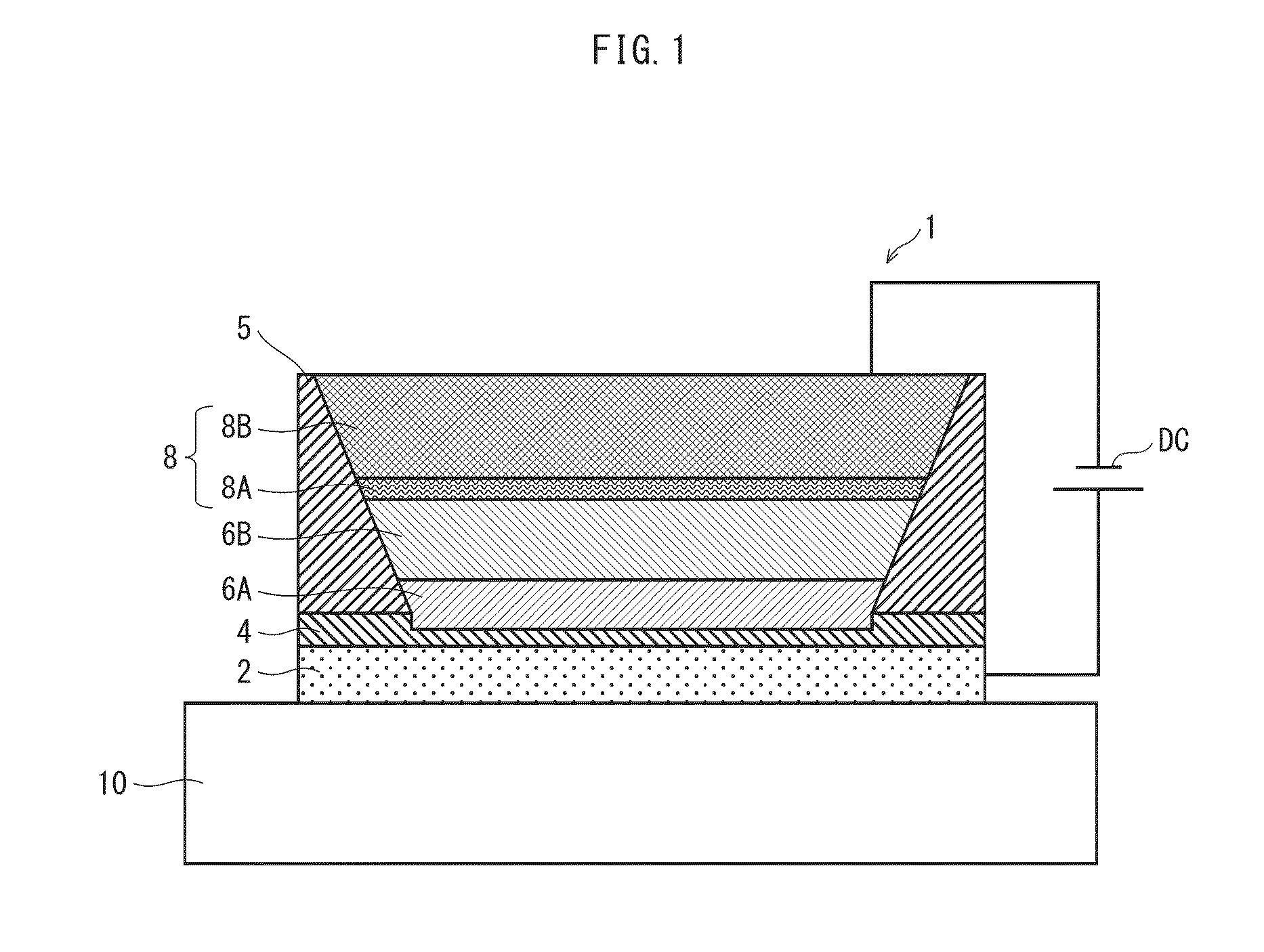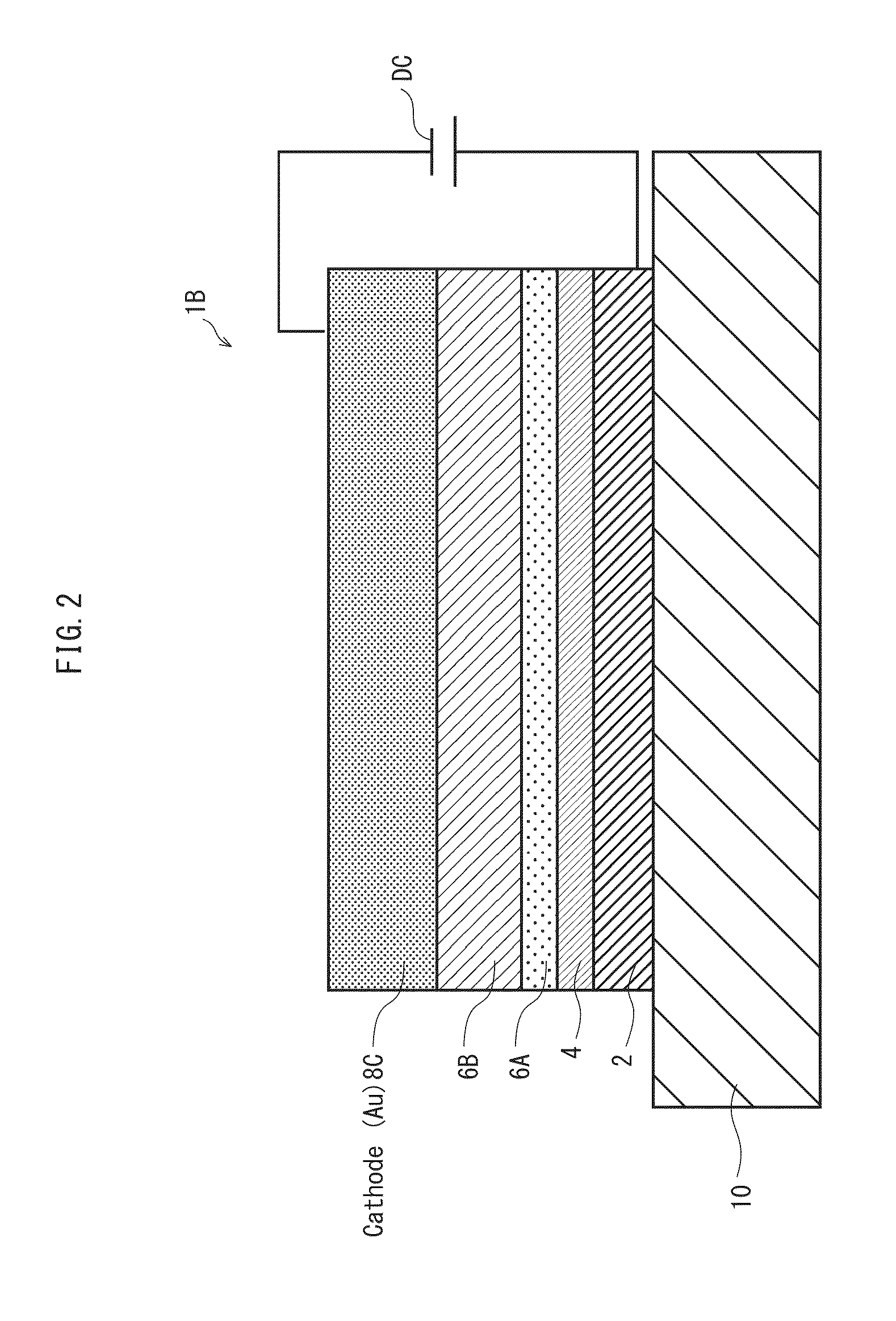Method for producing organic light-emitting element
a technology of organic light-emitting elements and manufacturing methods, which is applied in the direction of basic electric elements, electrical equipment, and semiconductor devices, etc., can solve the problems of difficult to precisely adjust the position of the mask used in the vapor deposition method, the difficulty of manufacturing a properly functioning display, and the difficulty of vapor deposition type organic el elements to full-color, large-sized organic el panels with display sizes of around 100 inches, etc., to achieve excellent hole injection characteristics, reduction film thickness reduction
- Summary
- Abstract
- Description
- Claims
- Application Information
AI Technical Summary
Benefits of technology
Problems solved by technology
Method used
Image
Examples
embodiment 1
Structure of Organic EL Element
[0087]FIG. 1 is a schematic cross-sectional view illustrating the structure of an organic EL element 1 pertaining to embodiment 1.
[0088]The organic EL element 1 is an application type organic EL element. As such, the organic EL element 1 includes one or more functional layers having been formed by applying functional layer material by wet processing. The organic EL element 1 includes: a hole injection layer 4; one or more functional layers each containing organic material and having a predetermined function; and a pair of electrodes, composed of an anode 2 and a cathode 8. The hole injection layer 4 and the set of one or more functional layers, a buffer layer 6A and a light-emitting layer 6B in this example, are disposed one on top of the other, and are disposed between the pair of electrodes.
[0089]In specific, the organic EL element 1 includes, as illustrated in FIG. 1, a substrate 10, and the anode 2, the hole injection layer 4, the buffer layer 6A, ...
embodiment 2
Overall Structure of Organic EL Element 1C
[0269]FIG. 24A is a schematic cross-sectional view illustrating the structure of an organic EL element 1C according to the present embodiment. FIG. 24B is a partially expanded view near a hole injection layer 4C.
[0270]The organic EL element 1C is, for example, an application type organic EL element including one or more functional layers each having been formed by applying material in wet processing. The hole injection layer 4A and a set of one or more functional layers, each containing organic material and having a predetermined function, are disposed one on top of the other, and are disposed between a pair of electrodes, composed of an anode 2 and a cathode 8D.
[0271]Specifically, the organic EL element 1C includes a substrate 10 having the following layered on one main surface thereof in the stated order: the anode 2, an ITO layer 3, the hole injection layer 4A, a buffer layer 6A, a light-emitting layer 6B, an electron injection layer 7, a...
PUM
| Property | Measurement | Unit |
|---|---|---|
| total pressure | aaaaa | aaaaa |
| total pressure | aaaaa | aaaaa |
| temperature | aaaaa | aaaaa |
Abstract
Description
Claims
Application Information
 Login to View More
Login to View More - R&D
- Intellectual Property
- Life Sciences
- Materials
- Tech Scout
- Unparalleled Data Quality
- Higher Quality Content
- 60% Fewer Hallucinations
Browse by: Latest US Patents, China's latest patents, Technical Efficacy Thesaurus, Application Domain, Technology Topic, Popular Technical Reports.
© 2025 PatSnap. All rights reserved.Legal|Privacy policy|Modern Slavery Act Transparency Statement|Sitemap|About US| Contact US: help@patsnap.com



